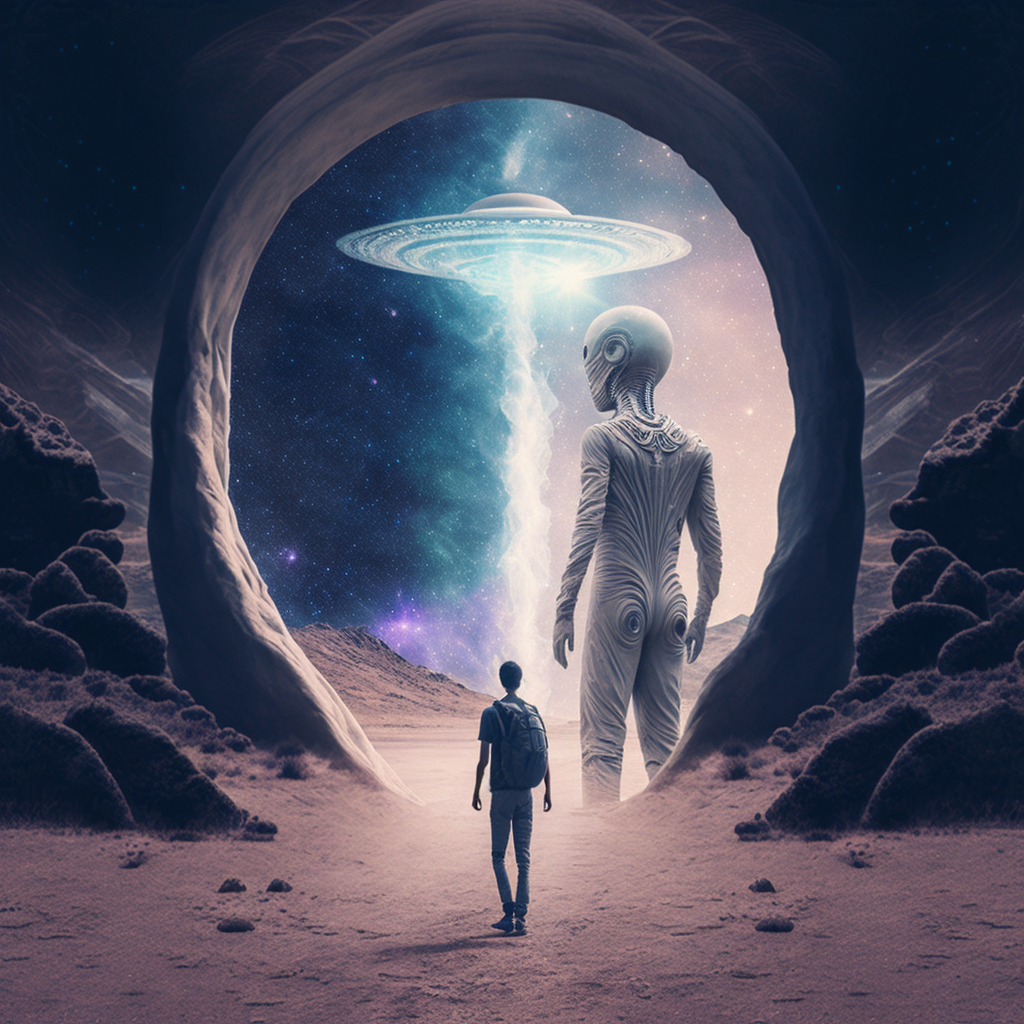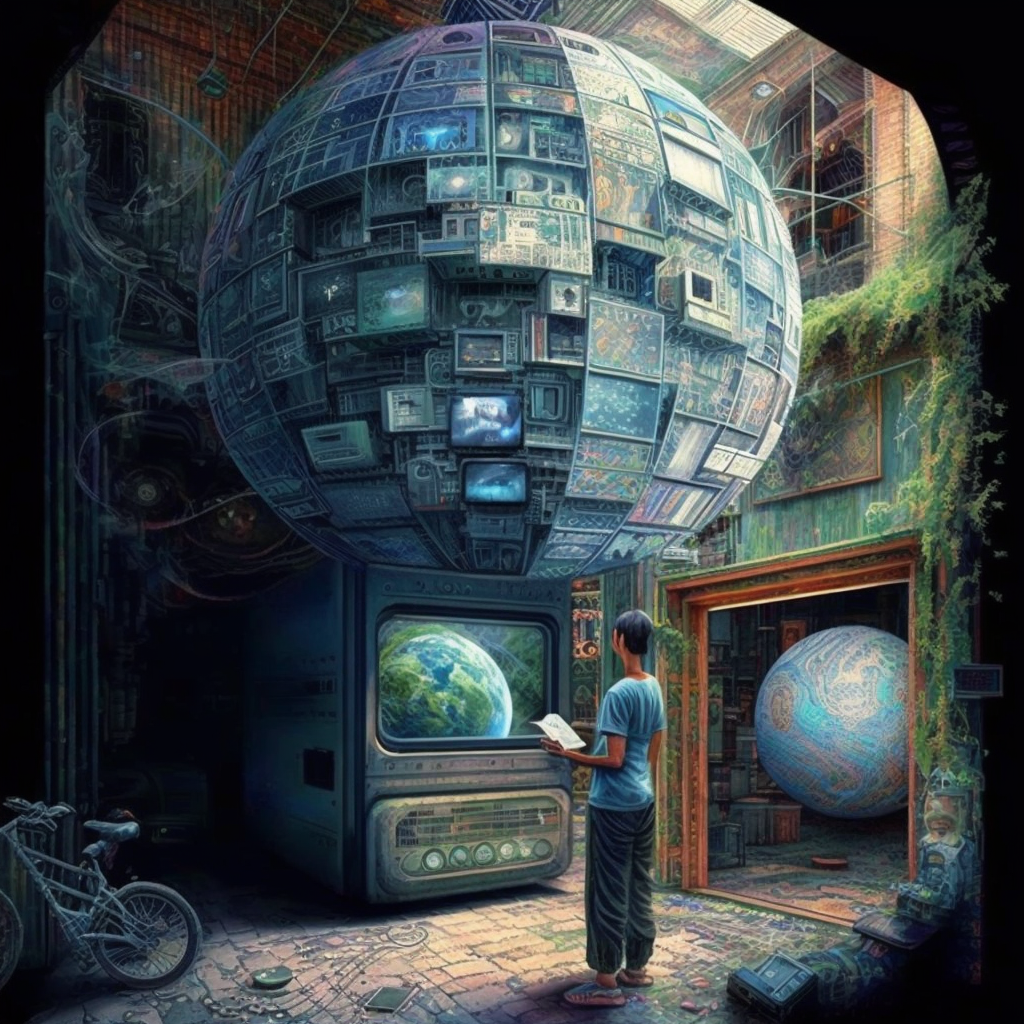Neither Believing nor Disbelieving: Impossible Futures, Conspiracy Theories, Aliens, and More: Part II
YouTube: 2007
I’m working on my thesis film, “Ichthyopolis,” for my MFA degree in Film and Video production from the University of Iowa. This 9-minute animation, which peers into a fantastical world of fish and their human caretakers, takes 4 years to complete. I attribute part of why the production takes so long to the fact that, during this 4-year span, Shannon and I move halfway across the country to Wilmington, NC, have our first child (a chiweenie named Dru - which we adopt from a small dog rescue), buy a house, and begin new teaching jobs at the University of North Carolina Wilmington.
Working on “Icthyopolis” is sometimes a bit of a slog, as animation can be. In order to make the journey a bit less monotonous, I play Youtube videos in the background as I advance by microsteps. Youtube is only a couple of years old at this point, and though the video quality is chunky and more or less horrible, the collective content already seems infinite.
The 9-11 event still looms large in the rear view mirror and there exists a vast array of conspiracy theory videos about the attacks, which then opens a door to conspiracy/alternative theory videos about other topics (aliens, microchips, chem trails, the systematic dampening of human consciousness, etc.). A genre of online conspiracy documentaries (often created by one or a few people), constructed from found footage, visionary art, and a variety of other accessible materials emerges. What these videos share in common is a claim that there exists a control system of elites (human or otherworldly) that hide some existential truth from humanity. By now, this narrative has become quite alt-mainstream but in 2007, it occupies the fringes, through a perfect storm of YouTube’s sudden growth and the 9-11 attacks.
It’s important to note that the conspiracy content of YouTube’s early days has a much different orientation than the videos that emerge later with Sandy Hook and Q-Anon - at least as far as I am aware. These earlier videos, if they are politically aligned at all, might more likely be alt-left or post-hippie Libertarian-left rather than alt-right. They question monolithic power structures, reimagine ancient histories, not so distant futures, and welcome any audience that gives them the time - regardless of political affiliation. They open the imagination to concepts such as “free energy” (which would render the fossil fuel industry obsolete), breakaway civilizations and secret space programs that fire-wall alien contact and technology from humanity.
All in all, these videos carry what I would call Gnostic undertones. The basic gist of the Gnostic mythology, not to be taken literally, expresses that humanity is cut off from the higher realms by a false god who creates Earth as a material prison. According to the mythology, humanity is gifted a divine spark from an emissary of the higher realms, thus elevating humans above the god who created them. The modern iteration of this myth might cast a network of oppressive governments, monolithic corporations, and various other control systems in the role of god and the resulting institutional landscape as the material prison. But also in keeping with the Gnostic myth, there is that golden nugget of truth embedded within our psyche that offers a key out of the prison into a more evolved and perhaps enlightened cultural existence.
Circa 1880; artist unknown
“Ichthyopolis” is the first in a series of films, where I am interested in entering into mythical realms, so the conspiracy videos playing in the background provide a lively substrate for inspiration. I hesitate to admit this, since if one admits to consuming conspiracy content, one risks being seen as delusional and not capable of critical thinking. I interface with these videos, however, by entering into a state of “neither believing nor disbelieving.”
In order for me to enter this state, it’s necessary for interview subjects and other players in the videos to believe in what they’re saying. If they truly believe their claims, it helps me suspend disbelief. But at the same time, it’s also important that testimonials not be too specific and go too far out. If an interview subject claims to be in contact with Atlantean descendants now living within the star system Sirius, via a portal near Mars, the spell is broken - for me at least. The experts have to occupy a state of partial unknowing as it implies they’re still searching. It’s all part of the ritual fo me.
I’m not here to promote the alternative theories that blossomed in YouTube’s fertile soil during the early days, but I’m not interested in trying to debunk them, either. Getting caught up in facts and factual inaccuracies might have meant that I missed some of the archetypal longings of these videos. What I mean by this is that behind any specific claims in this alternative content, there exists a desire for something that transcends current power structures and hierarchies and allows the audience to imagine expansive and seemingly impossible, though hopeful, futures.
Some may regard engaging with this type of alternative and sometimes fantastical content as unproductive daydreaming at best. However, as the leaders of any organized society understand, myths have practical, tangible outcomes for the society. The difference between the state or institutionally generated myth and conspiracy myths is that the state/institutional myth is more centralized in its creation and total in its dissemination while the conspiracy myths seem to originate from a motley, populist, and decentralized wellspring for niche audiences. But the outcome is the same - a guiding narrative for a group and one that the group craves on some instinctual level.
We all follow myths. The fact that tech giants sent Captain Kirk into space more than hints at the fact that the Star Trek mythology was important in the tech world. And this is further backed up by the many instances where technological developments have been inspired by science fiction (e.g the flip phone?). Even hard core-materialist scientists follow myths (e.g. the myth of the rational mind and its ability to bring light to all the dark places). If one has an awareness of which myths one is following and doesn’t take the myths too literally, these myths can serve to open one’s mind to creative possibilities. I realize this is my personal grand-sweeping opinion but I do also recognize that is one of my myths.
In a culture where institutional belief systems are being composted by an increasingly fragmented populace, there are a couple of things we all seem to agree on, despite the wide range of political leanings. First the increasingly outdated myth of progress hasn’t delivered on its mid-20th century promises (which include more leisure time and a utopian sense of well being thanks to technology solving our problems) and second, there do exist elite power structures that don’t appear to act in our best interests. And while it is difficult to prove definitively which conspiracy theories exist as conspiracy fact, and which are bogus (though some are obviously bogus), conspiracies of one sort or another, orchestrated by the rich and powerful, have existed throughout history, so distrust of elite power structures is understandable.
Before moving on to Part III, I want to acknowledge that the conspiracy/alternative theory universe is complex and complicated. There are of course the dark rabbit holes, zealous adherence to certain theories, and the divisive and racist nature of other theories which contract rather than expand the imagination. I’m certainly not advocating for getting lost in this type of engagement.
I’ve half joked to people that I wonder if there is some CIA operation that creates all sorts of conspiracy theories to discredit valid conspiracy theories (Operation Haystack?) and make sure that anyone who questions elite power structures is labeled as a crazy conspiracy theorist. Divide and conquer. Ultimately there’s no way to get the bottom of what is really going on. It’s turtles all the way down and one can easily drive oneself crazy and take several wrong turns, trying to do just that.
The value of looking at this phenomenon in mythical terms, as I often do in my own art, through a “neither believing nor disbelieving” vantage point, is that one can explore whatever archetypal truths (e.g. a desire for self-realization in the face of an impersonal culture of extraction) are contained within these theories. Working with things in this way, I can explore the longings and anxieties just below the surface without obsessively trying to get to some literal truth at the bottom but instead ending up lost in the murkiness.



